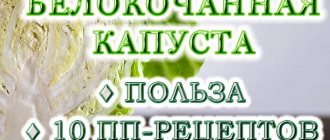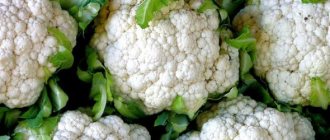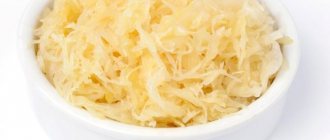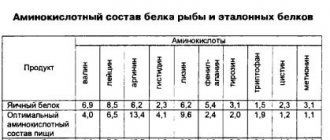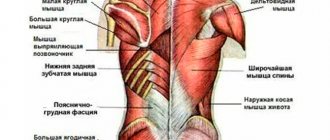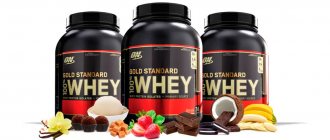Nutrition standards
For many athletes, both beginners and sometimes experienced ones, the problem of choosing the most healthy foods and dishes for their diet is pressing.
From an energy point of view, the nutritional norm of an average adult is in the region of 3-3.5 thousand kcal, depending on the type of activity. But for athletes trying to gain weight, or actively training before competitions, this norm is in the region of 4 thousand kcal, and can reach up to 5. Of course, not everyone can get this amount of calories from regular food, especially since the athlete needs not only calories as such, but also a balanced set of nutritional components: proteins, fats, carbohydrates, fiber, vitamins, minerals, etc.
To get additional calories (and, for example, protein), you can use sports nutrition, say a protein shake. But with ordinary food, which forms the basis of the diet, you need to figure it out. You should only include in your menu those dishes that are prepared from the best products that are optimal from the point of view of sports. We will look at products suitable for fitness and bodybuilding, collecting them into 4 groups: sources of protein, carbohydrates, fats and vitamins.
Results
Sauerkraut is a low-calorie healthy product with a rich vitamin composition. Regular consumption of cabbage in moderation has a positive effect on human health. With the help of the product you can lose weight and improve the functioning of the gastrointestinal tract, get rid of painful sensations in the muscles after a hard workout in the gym or at home. Systematic use of the product will strengthen the nervous system and immunity. There are practically no contraindications for use, as long as you do not exceed the daily allowance and do not add too much salt.
Proper nutrition is one of the main components of training progress. No strength training will lead to the desired result (a toned, sculpted body) without a thoughtful, balanced daily diet.
The best protein foods
Meat is the main source of protein, despite the fact that there are products with the same or even higher protein content (nuts, fish, shrimp and squid, cottage cheese, cheese, beans, peas, soy, etc.). In terms of the amount of protein among different types of meat, the leaders are beef, horse meat, rabbit, turkey and chicken. However, it is recommended to eat lean meat, such as chicken breast. It is important to keep in mind that red meat contains creatine, which is beneficial for athletes.
Fish and seafood contain almost more protein than meat; in addition, fatty fish can also be eaten, since fish oil, unlike pork or beef, is better and faster absorbed and contains polyunsaturated fatty acids (omega-3) , less bad cholesterol and has a number of other beneficial properties. Pink salmon, halibut, saury, salmon, river perch, carp and tuna, as well as squid and shrimp (especially Far Eastern) contain the most protein.
Eggs are easier to digest than meat and contain a lot of protein (although less than meat and fish). Soft-boiled eggs are best digested. Eating raw eggs is not recommended, and you should also not eat a lot of egg yolks, as they are believed to increase cholesterol levels. If you have to eat a lot of eggs, use mostly whites.
Cottage cheese and other dairy products contain a lot of protein. The healthiest thing is low-fat cottage cheese. Low-fat dairy products, such as fermented baked milk, yogurt, kefir, also contain a lot of protein. There is a lot of protein in cheeses, but they also have a lot of fat, so it is better to choose low-fat cheeses (such as feta cheese).
Legumes - beans, beans, soybeans, peas, lentils, etc. - contain a lot of protein, more than meat. If for some reason you are forced to limit your meat consumption, your body’s protein needs can be successfully compensated for by boiled beans (beans) or peas.
Nuts are another great source of protein. Peanuts have the most protein. It is followed (in descending order) by sunflower seeds, almonds and hazelnuts. You just need to remember that nuts contain a lot of fat - for example, more than 50% in seeds. Therefore, you should not consume kilograms of nuts - a handful of nuts a day is enough. It is also important to remember that some people are allergic to peanuts (and other nuts).
The healing effects of sauerkraut
Such a simple product as sauerkraut can have a healing effect on the body. But only if it is a high-quality product prepared according to all the rules.
- Sauerkraut is used as a preventive and therapeutic agent for erectile dysfunction. Systematic use of the product strengthens male sexual power and prevents early impotence.
- When used regularly, the product acts as a preventative against lung, intestinal and breast cancer, and helps fight cancer in the early stages.
- Eating cabbage reduces symptoms of headaches or joint pain.
- The condition of the oral mucosa improves, which accelerates the healing process of small cracks and ulcers, and freshens breath.
Cabbage brine helps treat liver diseases and reduces hangover symptoms. For pregnant women, brine helps fight toxicosis. The juice cleanses the intestines of toxins and poisons and improves digestion.
Best Sources of Carbohydrates
Porridge is an excellent source of carbohydrates. Moreover, it is important that cereals contain not only carbohydrates, but also protein (especially oatmeal, buckwheat, wheat groats, semolina, millet, pearl barley), as well as dietary fiber (fiber), which improves intestinal function. The amount of carbohydrates in various cereals varies from 65 to 75%. Interestingly, the type of grain processed can change the type of carbohydrates and glycemic index of the finished dish. For example, whole grain oatmeal (Hercules) has a low glycemic index, unlike instant oatmeal.
Noodles and pasta, especially those made from durum wheat and wholemeal flour. Adding vegetables high in fiber (lettuce and other greens, cabbage, green beans, etc.), as well as protein products (eg, meat sauce) lowers the glycemic index of the dish because it slows down the absorption of carbohydrates. In general, it is worth keeping in mind that eating vegetables and grains that contain fiber is useful for losing weight, but due to the slower absorption of carbohydrates and proteins, it may not be appropriate for gaining muscle mass.
Vegetables such as potatoes and beets also contain a lot of carbohydrates, and these are mainly quickly absorbed carbohydrates. You should not overuse fried vegetables - baked or boiled in their jackets are best.
Fruits and dried fruits, such as bananas, dates, dried apricots, figs, prunes, raisins, are simply a storehouse of simple carbohydrates, as well as microelements and vitamins. They can be eaten plain (or mixed with nuts), and added to porridge and other dishes.
How do fat burners work?
They speed up metabolism: fat is converted into energy, which is necessary for long-term workouts. However, the effect of taking it is reduced to zero if there is no heavy physical activity. An alternative is natural fat burners, usually rich in fiber. In order to break them down, the body expends as much energy as an athlete usually loses during intense training, the feeling of a full stomach persists for a long time, and intensive weight loss occurs. Sounds tempting for those dreaming of losing weight!
Natural fat burners are vegetables and fruits rich in fiber. One of the most preferred of them is cabbage, a fat burner rich in vitamins, potassium, phosphorus, calcium, and folic acid. There is no less vitamin C in cabbage than in lemon, which is undeservedly considered the “ascorbic” leader. But fat-burning cabbage also contains coarse fiber, fiber, which has a beneficial effect on the functioning of the stomach, gently cleanses the intestines, and removes toxins and waste from the body. After using it, there are no side effects such as excessive sweating or discomfort that are characteristic of chemical fat burners.
There are many diets that suggest eating boiled and stewed cabbage. We can agree that there are few calories in such dishes, but during heat treatment all the beneficial properties of the vegetable are lost. In order to lose weight, you need to eat cabbage every day, but only in raw or pickled form. You don’t get tired of cabbage, because nature has offered a wide choice: white and red cabbage, kohlrabi, Brussels sprouts, Peking sprouts, cauliflower, sea cabbage - just alternate the types and a seven-day varied menu is ready. Each type has its own advantages and differs in organic composition, so the body will receive complete nutrition.
“A good appetizer is sauerkraut, and it’s not a shame to serve it, and it’s not a pity to eat it,” - this is how folklore acutely appreciated sauerkraut. Sauerkraut strengthens the immune system; after fermentation, lactic acid is released, which neutralizes harmful bacteria in the intestines, therefore it is the best natural remedy for dysbacteriosis, enhances lactation, accelerates metabolism, while suppressing appetite - weight drops rapidly. Sauerkraut has fewer calories than fresh cabbage: 19 kcal per 100g.
Regular white cabbage, in addition to coarse fiber, contains a lot of vitamins and nutrients. For those on a diet, it is better not to add salt, just cut into strips, mash well and lightly sprinkle with lemon juice. There are contraindications: stomach diseases. Do not use if you have gastritis or ulcers, as it causes irritation to the mucous membrane. 100 g contains 27 kcal.
Red cabbage contains even more vitamins, but due to the flavonoids contained in the purple pigment, it is an excellent natural antioxidant. There are even fewer calories - 24 per 100 g.
Cauliflower is a fat burner, rich in iron and B vitamins. It nourishes the brain and tones the body. Indicated for chronic fatigue and nervous overload. It’s a pity that as a fat burner it should be consumed raw, as it tastes better after heat treatment. We count calories: 100 g - 30 kcal.
But broccoli is a rare natural product for ulcer sufferers; it contains rare vitamin U - a preventative against corrosion of the gastric mucosa and the formation of cancer cells. Broccoli is rich in potassium (helps the heart) and selenium (cataract prevention, rejuvenation). You can simply grate it on a coarse or fine grater and eat it like a salad, sprinkle with lemon if desired. 100 g - 28 kcal.
The leader at the beginning of the 21st century was Chinese cabbage. Housewives love it for the tenderness of its leaves and its pleasant taste and smell. The high content of iron, potassium, vitamins PP, E makes it one of the best diuretics needed to reduce swelling and act as fat burners. You can add tomatoes and herbs to a salad of fresh leaves to add flavor, sprinkle with lemon juice or soy sauce. Peking cabbage ranks first among its peers in terms of low-calorie content: 100 g - 12 kcal.
Another type: fat-burning cabbage kohlrabi. The taste is reminiscent of the “national” Russian vegetable - turnip. Kohlrabi removes excess fluid from the body, actively participating in metabolism, breaks down fats, of all varieties it contains the most potassium, calcium and phosphorus (prevention of osteoporosis, health of teeth and nails). Just peel and grate, season with dill and vinegar - a simple recipe for various ailments.
Finally, Brussels sprouts is a dietary product containing riboflavin. Brussels sprouts have a beneficial effect on the pancreas and are indicated for people suffering from diabetes, hypertension and during the postoperative period, as it quickly restores the body. Not recommended for those with high stomach acidity. You can add raw carrots and herbs to the chopped heads of cabbage and season with lemon juice.
All types of cabbage are active fat burners and a natural dietary product. Tartronic acid (found in all types of cabbage) blocks the conversion of carbohydrates to fat, so cabbage should be present in the diet as often as possible.
It is better to follow the cabbage diet for no more than a week, otherwise the benefits will turn into harm: without receiving fat, the body will begin to “eat” muscle mass - the figure will lose its definition. Less is better. And what could be better when there is such an amazing vegetable - fat-burning cabbage!
Proper nutrition is something athletes who are into growth peptides should always be concerned about. It is no less important than intense training. Today we will talk about cabbage - a healthy product for athletes.
It's no secret that many athletes underestimate this healthy vegetable. For example, white cabbage, which can easily be found in any store today, contains a huge amount of vitamins, minerals, quickly digestible proteins, and amino acid compounds. What about other types of cabbage?
Best Sources of Fats
Vegetable oils are all easier to digest and healthier for the body than animal fats. It is advisable not to fry in oil, but to add it to ready-made dishes (for example, porridge or salad), since heat treatment of oils greatly accelerates the oxidation of fatty acids and the formation of various harmful substances. Unfortunately, Omega-3 fatty acids, the most beneficial for the body, oxidize extremely quickly, so if you buy flaxseed or camelina oil, be sure to pay attention to the expiration date (the fresher the oil, the better), the light protection of the container (a dark brown bottle is better everything), and do not subject it to heat treatment under any circumstances.
Fish and fish oil - as already mentioned, contain a large amount of unsaturated fatty acids, which are easily digestible and accelerate metabolic processes, as well as contribute to more active processing of adipose tissue by the body and improvement of the cardiovascular system. Most Omega-3 polyunsaturated fatty acids are found in tuna, Atlantic salmon, Atlantic herring, trout, sardines, carp and salmon.
Nuts and seeds - we have already mentioned as an excellent source of vegetable fats. They also contain a lot of protein and very few carbohydrates. In addition, nuts contain a large amount of microelements (magnesium, potassium, zinc, iron, calcium).
Avocado is a very healthy vegetable, containing a large amount of vegetable fats and microelements.
Benefits for weight loss
There are many diets using sauerkraut. The product improves the functioning of the gastrointestinal tract, accelerates metabolism, improves mood, normalizes blood sugar levels, reduces cholesterol and saturates the body with vitamin C, helping to fight depression.
It is useful to have fasting days on cabbage; it removes toxins from the body, which improves the functioning of muscles, intestines and even the nervous system.
The product contains folic acid, which, when entering the body, accelerates the fat burning process, which ultimately leads to the loss of extra pounds. To enhance the effect, you need to increase physical activity - exercise two to three times a week or take long walks.
Note: When on a diet, prepare sauerkraut dishes without adding salt. To lose weight, half an hour before meals, you can drink half a glass of sauerkraut juice.
The recommended daily intake of cabbage is from 300 to 500 g when following a diet. In a normal diet, it is enough to consume up to 250 g of product per day.
Sources of vitamins
Fruits first. Citrus fruits, kiwi, apples, and cranberries especially contain vitamin C. Apricots are rich in potassium and magnesium, while pomegranates contain large amounts of iron.
Fresh vegetables - tomatoes, carrots, spinach - are rich in antioxidants, carotenes, and tomatoes are a storehouse of lycopene.
Onions, garlic and herbs are the richest source of a number of essential microelements, vitamins, antioxidants, phytoncides and other substances. They help to cope with stress (and every hard workout is stress for the body), increase the body’s resistance and endurance, strengthen the immune system and have a number of other beneficial effects on the athlete’s body.
The benefits of seaweed for the body
It has long been proven that seaweed has a positive effect on the human body, especially for athletes involved in strength sports. The product contains various substances that improve muscle activity.
Studies have shown that consuming the product helps improve athletic performance. This is due to the fact that it contains a large amount of substances necessary for bodybuilders. Seaweed can be an excellent addition to any athlete's nutrition program.
History of sauerkraut
Cabbage began to be grown before our era. Gradually its shape changed and it became the familiar round head of cabbage in England in the 14th century. Having reached Europe, cabbage migrated to other countries and was one of the most important and accessible vegetables in agriculture.
Cabbage was first fermented in China 2 thousand years ago to extend its shelf life. The vegetable was poured with a salty solution, and fermentation began under the influence of bacteria. Lactic acid was released - a natural preservative, which gave sauerkraut a sour taste.
Myth 1
Gastroenterologists and pediatricians say that first courses dilute gastric juice and reduce the concentration of digestive enzymes, that is, they impair the absorption of food.
Reality
:
The work of the stomach is designed in such a way that liquid leaves it immediately, and solid food sometimes remains for several hours, “grinding” into liquid gruel (chyme) with particles 1-1.2 mm in size - larger ones do not pass further into the duodenum. And all this time, gastric juice is secreted with acid and only one type of enzymes - proteases, which break down only proteins, and only partially. Neither fats nor carbohydrates are digested in the stomach.
The main digestion occurs after the stomach - in the duodenum, where pancreatic enzymes enter, and then in the small intestine. And the concentration of enzymes does not decrease because of the soup. Digestion occurs only in a liquid medium, and if there is not enough water, the small intestine “absorbs” it, and if there is a lot of it, it pumps it out. So a liquid first course only makes digestion easier.
The benefits of sauerkraut
When cabbage is fermented, bacteria convert sugar into lactic acid, making the product much healthier for those who need to control their sugar levels. At the same time, the remaining substances in the vegetable are not destroyed, and the nutritional value of the product increases. The number of bacteria beneficial to humans in sauerkraut is no less than in kefir or yogurt.
Lactic acid inhibits the development of harmful bacteria in the intestines and is very useful for people with slow metabolism. The fiber in sauerkraut also accelerates the elimination of toxins and breakdown products and improves the absorption of microelements.
This product helps reduce cholesterol and blood glucose levels by affecting the metabolism of acids in the liver. Since it is elevated cholesterol levels that contribute to the formation of atherosclerotic plaques in blood vessels, sauerkraut can reduce the risk of heart and vascular diseases and lower blood pressure.
Organic acids, which give cabbage a familiar sour taste and smell, have a beneficial effect on the immune system and support health during the cold season, and serve as a source of vitamin C.
In general, quite frequent consumption of sauerkraut improves your health. The product is rich in vitamin A, calcium, manganese, potassium, and organic acids. Their properties reduce the harmful effects of free radicals that destroy body cells by “oxidizing” them. Skin health and vision also improve.
Use of sauerkraut in medicine
Sauerkraut has been used in folk medicine for a long time, mainly to improve digestion. It also improved immunity and accelerated the recovery of people after prolonged hunger and vitamin deficiencies.
In modern medicine, cabbage is recommended by nutritionists for people who want to lose weight. Sauerkraut speeds up metabolism and slows down the conversion of carbohydrates into fats thanks to the tartronic acid in its composition. At the same time, the product helps to avoid feelings of hunger - fiber takes a long time to digest and gives a feeling of fullness, and cabbage itself is low in calories.
Sauerkraut and its brine are recommended to be included in the diet of diabetics to reduce blood sugar levels. The mild stimulating effect on digestion is useful for constipation and hemorrhoids. The effect of sauerkraut on intestinal cancer has even been proven. British scientists noticed during their research that the restoration of damaged intestinal cells accelerates, and immune cells become more active. This happens thanks to a special substance called indole-3-carbinol, which is formed when cabbage is digested. The theory was confirmed by the British Institute of Cancer Research.

